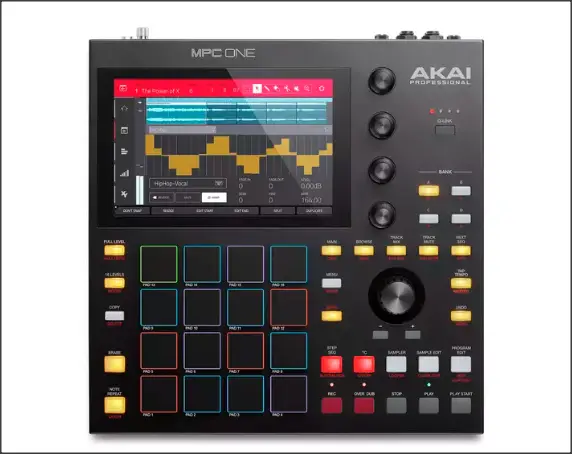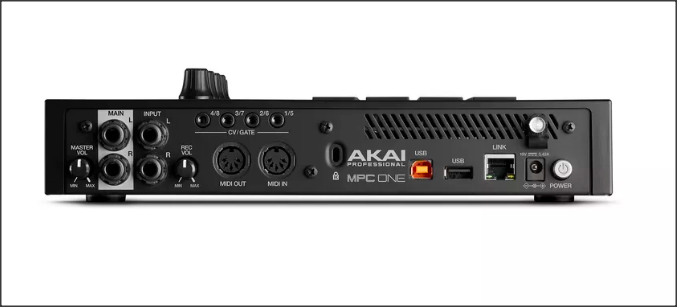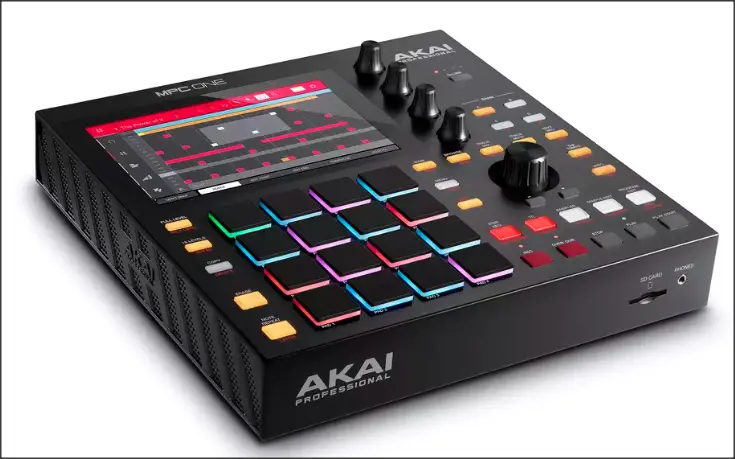Japanese electronics company Akai recently announced the MPC One, which will be the latest addition to its renowned MPC product line. This music-making, standalone workstation enjoys a compact form and draws inspiration from other products from Akai, thus offering an affordably-priced MPC product that includes the core features.
The MPC X & MPC Live – the predecessors – and the MPC One are similar in a number of ways. All of them have MIDI output and input, enjoy Splice integration (a sample platform), network connectivity, multitouch display, pressure-sensitive pads, and a 16 velocity signature square as well.

However, it’s the price point that distinguishes the MPC One from the competition. It costs just over $699, an incredible bargain especially when given that the MPC X and MPC Live cost over $2000 and $1000 respectively. For those who don’t know about the company’s distinguished product line, the MPC series was first launched over thirty years ago. It forever changed the music-making industry, thanks to its all-in-one production approach and intuitive interface. Artists like Om’Mas Keith and Dr. Dre have sworn by it, and one product is even on display at the Smithsonian Museum.
However, the low price is not without its consequences. Only the most essential features have been retained in this device. Fans of the MPC Live are likely to be disappointed over the fact that this device doesn’t come with rechargeable batteries, thus ending its ‘play anywhere’, portable appeal. It has also cut down on ports and storage. For instance, the MPC One device uses CV instead of aux outputs and comes with just 4 gigs of storage, compared to the 16GB provided with both the X and Live variants.
While it might not be as feature-rich as its cousins, it does have a competitive price tag. Let’s take a look at its offerings. Akai claims that it has packed a comprehensive set of features into this device.
Apart from the 16 pads, the MPC One also comes with 4 touch-sensitive rotaries and a 7” multitouch display. The back has one set of useful MIDI I/O ports, 8 outputs, and 4 Gate/CV ports (to control connected gear). It also has USB flash & 2 GB RAM. An SD card can be used for expanding its 4 GB capacity – which will be needed, considering the storage comes preloaded with 2 gigs of loops and drum samples.
The device also includes Air FC plug-ins, which are useful for mastering and mixing and soft synths. Akai has stated that the MPC One was designed with affordable prices, increased CV functionality & a smaller size as its prime objectives.

This device is unlikely to be worth it for people who own other MPC devices. It is a viable alternative, not an effective replacement. Therefore, the MPC One is a great choice for individuals looking for a standalone workstation or for the budget-conscious segment.
Expect the MPC One to be launched in stores by February.








